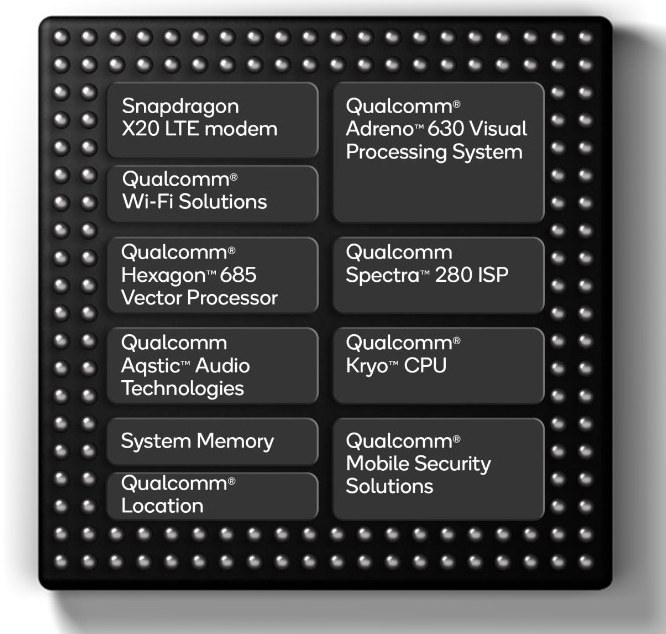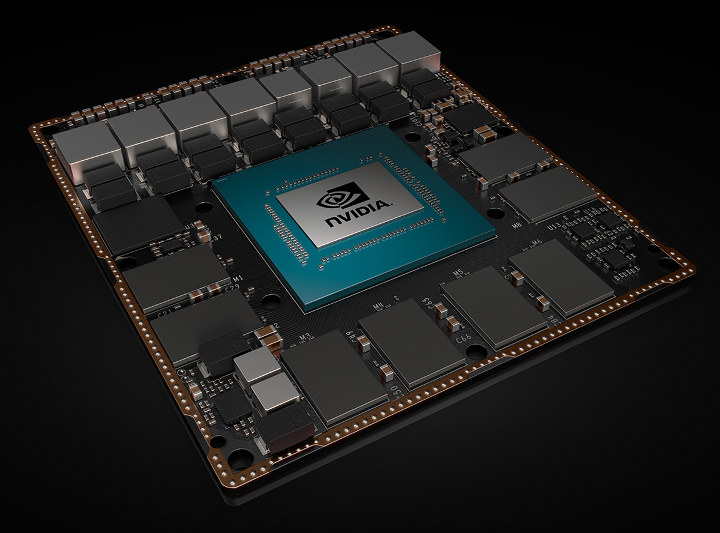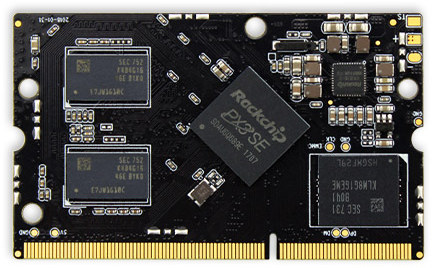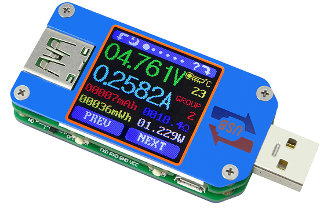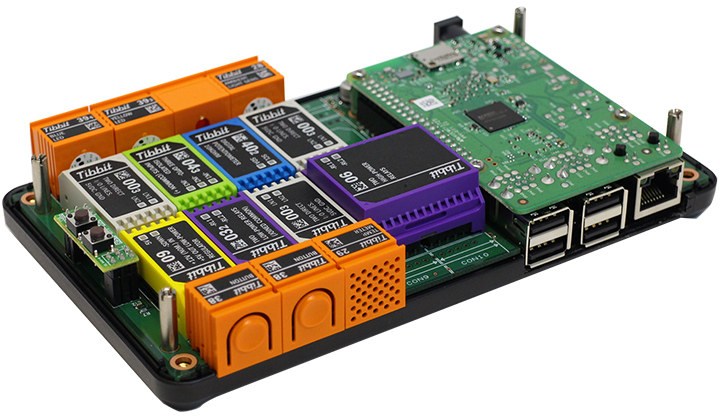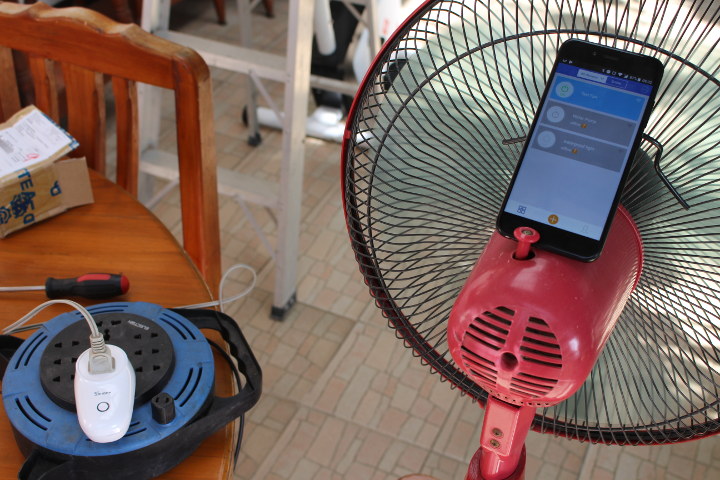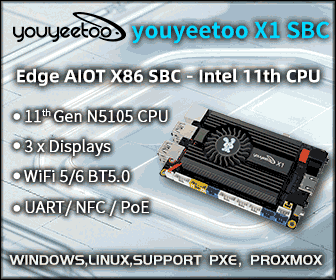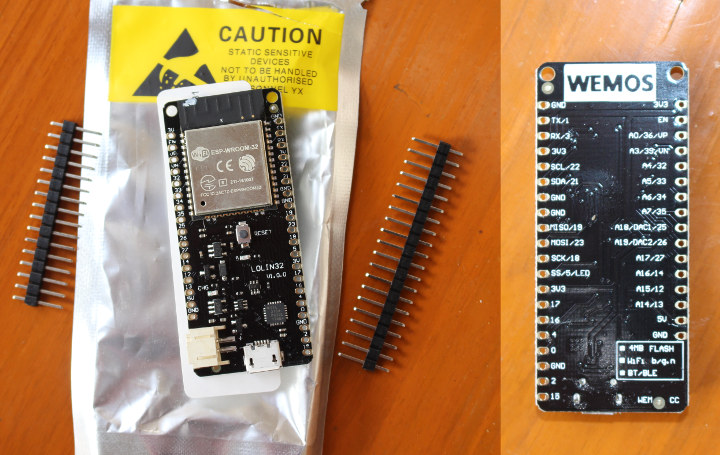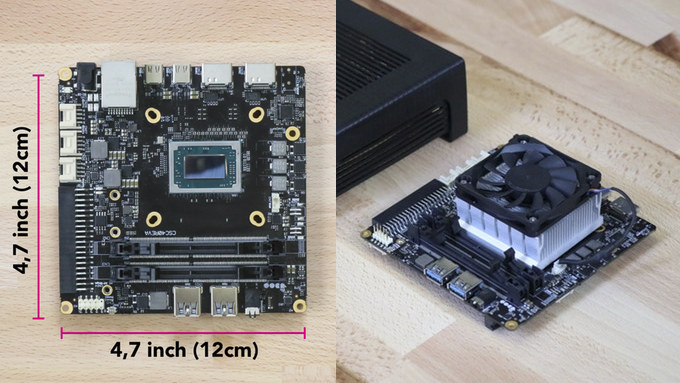As you all probably know, Qualcomm and Microsoft worked together and launched always-on, always-connected Windows 10 mobile PCs powered by Qualcomm Snapdragon 835 Arm processor earlier this year. Battery life is spectacular, but considering the fairly high price of such devices, many were disappointed by performance which in many cases is not much better than much cheaper Intel Apollo Lake laptops. But performance of future Qualcomm based Arm laptops will improve significantly thanks to Snapdragon 850 Mobile Compute Platform featuring eight Kryo 385 cores clocked to close to 3 GHz, and other enhancements. Qualcomm Snapdragon 850 “Mobile Compute Platform” specifications: CPU – 8x Kryo 385 Arm cores clocked @ up to 2.96 GHz GPU – Adreno 630 Visual Processing Subsystem with Open GL ES 3.2, Open CL 2.0, Vulkan, DirectX 12 Ultra HD Premium video playback and encoding @ 4K (3840×2160) 30fps, Slow motion HEVC video encoding of FHD (1080p) […]
NVIDIA Introduces Jetson Xavier Devkit and Isaac Robotics Software
NVIDIA Xavier was first unveiled in September 2016 as an artificial intelligence SoC with eight NVIDIA Custom 64-bit Arm cores, a 512-core Volta GPU, 8K video encoding and decoding, and a computer vision accelerator (CVA) now called NVDLA (NVIDIA Deep Learning Accelerator). Earlier this year, the company announced Xavier was sampling, and DRIVE IX & DRIVE AR SDKs for the automotive market. On the eve of Computer 2018, NVIDIA has introduced Jetson Xavier development kit, as well as Isaac robotics software for autonomous machines. Jetson Xavier key specifications: SoC – NVIDIA Xavier with 8-core ARMv8.2 64-bit CPU, 8MB L2 + 4MB L3 512-core Volta GPU with Tensor Cores 2x NVDLA engines for deep learning 7-way VLIW Processor for vision acceleration VPU with dual 4Kp60 video decoding and encoding System Memory – 16GB 256-bit LPDDR4x | 137 GB/s Storage – 32GB eMMC 5.1 flash Display – 3x eDP/DP/HDMI at 4Kp60 | […]
Firefly Core-PX3-SEJ SoM Features Rockchip PX3-SE Industrial-Grade Processor
Allwinner is not the only Chinese fabless silicon vendor to offer industrial grade processors, as Rockchip PX3 SE quad core Cortex A7 processor can also operate in the industrial temperature range (-20°C to 80°C). I had covered Rockchip PX3 previously, but it’s the first time I read about Rockchip PX3-SE processor, and Firefly is the first company to integrate the processor into a product, namely Core-PX3-SEJ system-on-module. Core-PX3-SEJ module specifications: SoC – Rockchip PX3-SE quad core Cortex A7 processor @ 1.3 GHz with Arm Mali-400MP2 GPU – See datasheet for details System Memory – 512MB, 1GB or 2GB dual-channel DDR3 Storage – 4GB, 8GB, 16GB, or 32GB eMMC flash Edge Connector – 204-pin DDR3 SO-DIMM connector with Storage – Micro SD card interface Connectivity SDIO interface for WiFi & Bluetooth module Gigabit Ethernet Display – HDMI up to 1080p, CVBS, MIPI DSI or LVDS for LCD display Audio – Via […]
UM25C is a Better USB Power Meter with built-in Display, Bluetooth, and Android & Windows Apps
Products such as USB Charger Doctor are good way to test your USB chargers or cables, as well as checking the power consumption of USB powered development boards. You just plug them into a USB port, and connect the load, and you’ll see the real-time voltage and current shown on an LED display. Those do the job, but I’ve just been made aware of UM25C USB meter tester that improves a lot on the concept with a dot matrix display capable of showing charts, and Bluetooth connectivity to send the data to Android or Windows devices. UM25C specifications: Display 1.44″ color LCD display 0-5 brightness setting Auto screen off time – 0 to 9 minutes Refresh rate – 2Hz Measurement Range & Accuracy Voltage – 4-24.000V ±0.5‰ + 2digits Current – 0-5.0000A ±1‰ + 4 digits Capacity – 0-99999mAh Energy accumulation – 0-99999mWh Load impedance – 0.8Ω-9999.9Ω Time range – […]
Tibbo-Pi is a Wirefree Modular IoT Prototyping Platform for Raspberry Pi Board
Tibbo Project System (TPS) is a modular Linux IoT prototyping platform based on the same Texas Instruments Sitara AM335x processor used in BeagleBone Black or a PocketBeagle boards, and comprised of a main board, Tibbit blocks to add features as needed, and an enclosure. I’ve now been informed the company will be at Computex 2018 to showcase their new products including Tibbo-Pi, following the same concept as Tibbo Project System, but leveraging Raspberry Pi 3 board and ecosystem instead. While an English brochure is said to be available, all information in the webpage listed in the photo above is in Japanese. But basically, Tibbo-Pi is said to be an IoT edge device for industrial use, made for build a prototypes, or small scale production system thanks to a choice a 60 different Tibbit Blocks sensor and I/O module blocks, all wire free. Programming of the system is typically done with with […]
Sonoff S26 Smart Socket Mini Review & Teardown
ITEAD Studio very recently launched their Sonoff S26 WiFi Smart plug as a more compact and cost effective upgrade to their Sonoff S20 smart sockets, and which comes in 6 different versions for China, Australia, the United Kingdom, the United States, Europe type F for Germany, Austria, the Netherlands, Sweden, Finland, Norway, Portugal, Spain and Eastern Europe, and Europe type E for France, Belgium, Poland, Slovakia, the Czech Republic, Tunisia and Morocco. You can find the one that suits you most on World Standard website. I was interested in getting the device, mostly to check the hardware design, so the company sent me one sample to try out. Sonoff S26 Unboxing Sonoff S26 comes is a white package with Sonoff branding. I received the US type plug (S26B model) which includes a ground pin on both side, so it’s not suitable for most sockets here in Thailand that do not […]
My Attempt at Getting Started with Zephyr Project OS on ESP32
Zephyr Project is a real-time operating systems for the Internet of Things (IoT) that was introduced in early 2016, and supported/hosted by the Linux Foundation. It runs on a fairly large number of MCU boards from different architecture (x86, Arm, RISC-V, etc..), and Linaro even launched 96boards IoT compliant hardware like BLE Carbon board that are designed to run Zephyr Project. More recently, Linaro CEO revealed several commercial products are shipping with Zephyr Project OS, so I thought it might be a good time to give it a try. Target Board – Wemos Lolin32 I only had STM32 Bluepill, and some ESP32 boards, so I went with the latter since it comes with WiFi. But instead of re-using some of my existing boards, I asked Banggood whether they could send Wemos Lolin32, which they did. They sell it for $7.99 shipped, but any other ESP32 board should do. The board […]
UDOO BOLT AMD Ryzen Embedded V1000 SBC Goes for $229 and Up (Crowdfunding)
While Intel has been outing low cost and low power processors with less than 10W TDP over the years with their Bay Trail, Cherry Trail, Braswell, Apollo Lake, and now Gemini Lake processors, AMD has not really ventured into the low power space, and the latest announcements about 10-12W processors was for their Embedded G-Series J Family, which I have not seen in many products. More recently, the company introduced Ryzen Embedded V1000 family of processors with 4 to 8 Zen cores, 4K support, 10 GbE interface, and more with a TDP of 12 to 25W for Ryzen Embedded V1202B & V1605B dual / quad core processors. The latest x86 UDOO board – dubbed UDOO BOLT – will be one of the rare AMD development boards available on the market with pricing starting at $229. Two versions of the board will be available: UDOO BOLT v3 with Ryzen Embedded V1202B, […]


